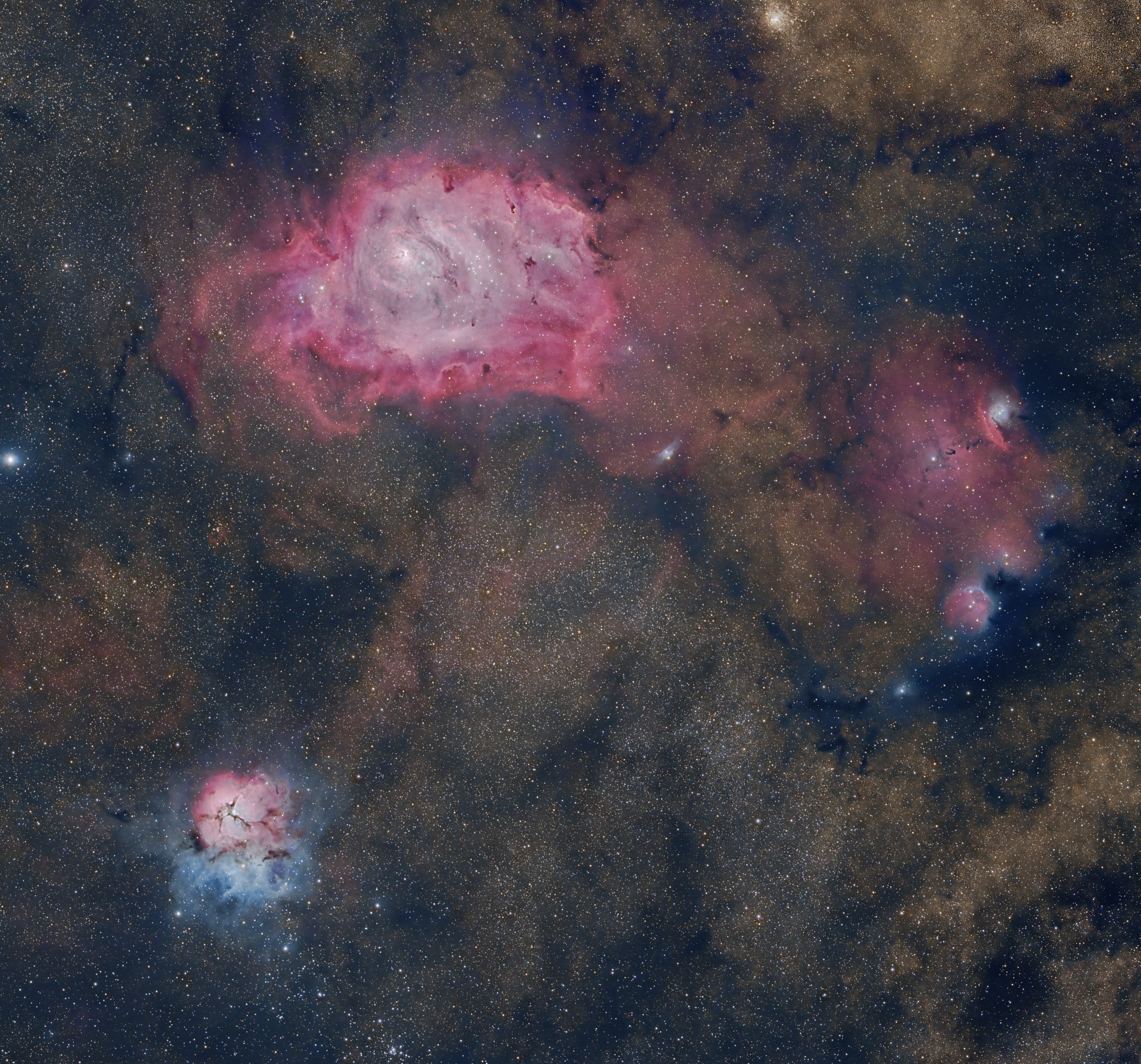
Posted on 07/10/2024 12:40:25 PM PDT by MtnClimber
Explanation: These three bright nebulae are often featured on telescopic tours of the constellation Sagittarius and the crowded starfields of the central Milky Way. In fact, 18th century cosmic tourist Charles Messier cataloged two of them; M8, the large nebula above center, and colorful M20 below and left in the frame. The third emission region includes NGC 6559, right of M8 and separated from the larger nebula by a dark dust lane. All three are stellar nurseries about five thousand light-years or so distant. Over a hundred light-years across the expansive M8 is also known as the Lagoon Nebula. M20's popular moniker is the Trifid. Glowing hydrogen gas creates the dominant red color of the emission nebulae. But for striking contrast, blue hues in the Trifid are due to dust reflected starlight. The broad interstellar skyscape spans almost 4 degrees or 8 full moons on the sky.
For more detail go to the link and click on the image for a high definition image. You can then move the magnifying glass cursor then click to zoom in and click again to zoom out. When zoomed in you can scan by moving the side bars on the bottom and right side of the image.

That part of the sky is SO spectacular in the Summer. I envy those in the Southern Hemisphere that can see this portion of the Milky Way higher in the sky. They must have some amazing views!
We're gonna need a faster spaceship.
That pattern looks like my Fusion hybrid flooring: if you spill anything on it, you can get away without having to clean it up...
I see the resemblence as each looks like an eyeball. But they are still quite different. I don’t think they are identical triplets. Had to have been multiple eggs, maybe even different fathers.
Disclaimer: Opinions posted on Free Republic are those of the individual posters and do not necessarily represent the opinion of Free Republic or its management. All materials posted herein are protected by copyright law and the exemption for fair use of copyrighted works.